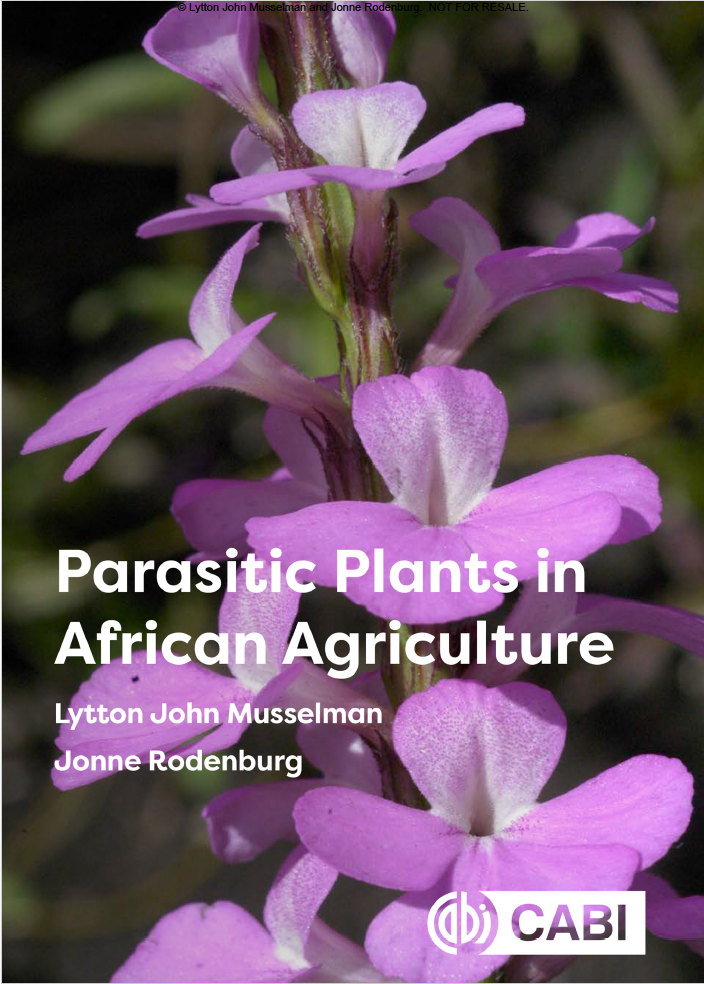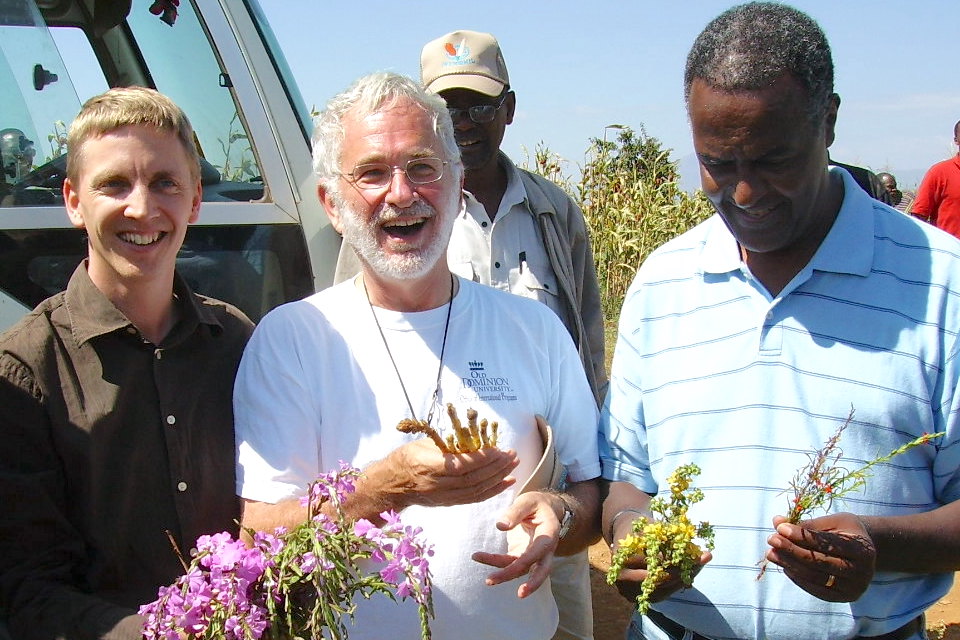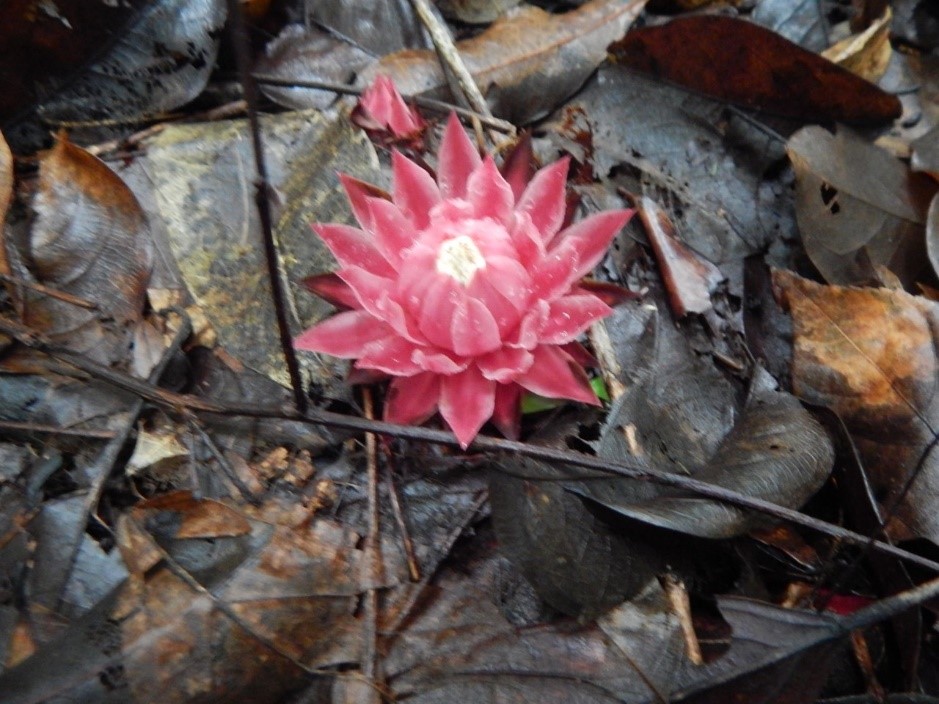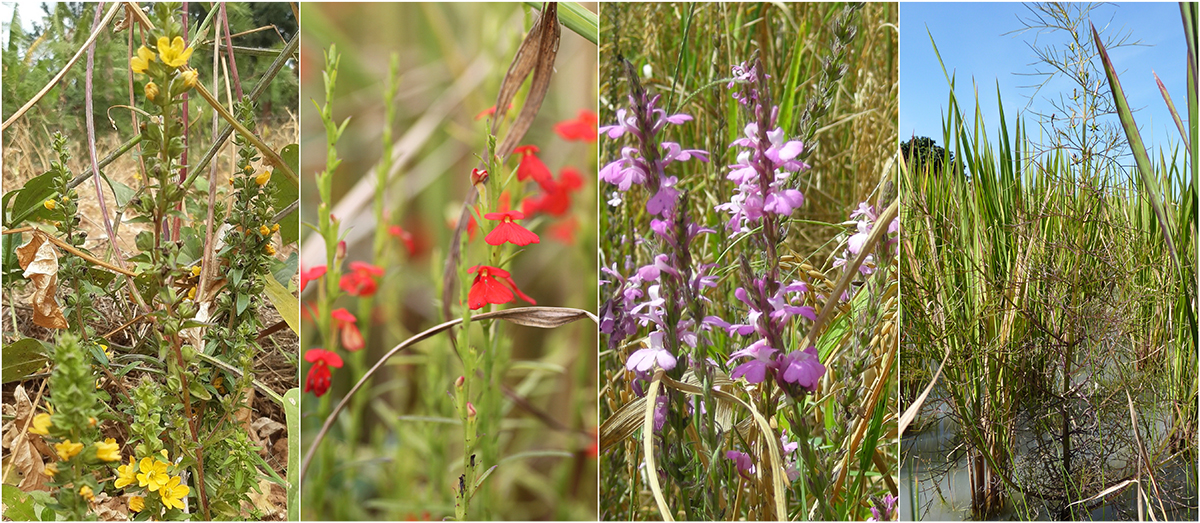
Parasitic plants depend fully or partly on other plants for their nutrition, growth and development. Parasitic plants can completely manipulate their host plants. Infected hosts show arrested development while enabling the parasitic plants they support to thrive. When parasitic plants invade agricultural fields, they become noxious weeds, causing considerable harm to farmers’ crops. Infestation by parasitic weeds can lead to serious crop losses, and sometimes, complete crop failures. There is a wide variety of parasitic weed species as well as crops they can parasitise. From food crops such as rice and beans to cash crops such as rubber and coffee, no crop is safe!
The new CABI publication, Parasitic Plants in African Agriculture, is the first book to present in one volume, all groups of parasitic plants known to occur in agricultural crops on the vast African continent. The book distinguishes between stem and root parasitic weeds and further categorises them according to the extent of their reliance on a host plant as a food source. For example, Holoparasites cannot produce their own nutrients and are thus wholly dependent on the host plant. Hemiparasitic plants get their mineral nutrients and water from the host but have retained, at least in part, the ability to make their own food through photosynthesis. Facultative parasites can grow independently but their reproduction is greatly boosted if they parasitise a host. In Parasitic Plants in African Agriculture, the ecology, biology, damage, and control are reviewed for each group of parasitic weed species.
The authors, Prof. Lytton Musselman and Prof. Jonne Rodenburg offer a comprehensive and expert analysis of the spread, biology and impact of these highly specialized weeds and recommend management options. Lytton J. Musselman is Mary Payne Hogan Professor of Botany at Old Dominion University, USA. Jonne Rodenburg is Professor of agronomy at the Natural Resources Institute (NRI) of the University of Greenwich.
The book is richly illustrated with photos and species distribution maps and reports on the relatively few parasites introduced to the Africa. It also describes the native parasites which have spread from within the continent. Parasitic plants ranging from the well-known witchweeds (Striga) parasitising cereal crops to groups and species that have received less attention in an agricultural context are detailed in the book. The latter include mistletoes and the mysterious Thonningia—only visible above ground by a fleshy red flower—parasitising on tree crops.
Smallholder farmers are especially largely affected by parasitic weeds in African agriculture. Therefore, these weeds are explicitly discussed taking into account the resource limitations these farmers face and global changes. The impact these plants have on crop production and livelihoods of smallholders is demonstrated in text and illustrations. Distribution of parasitic plant species is presented using maps. Parasitic Plants in African Agriculture provides a detailed description of current and future management approaches, considering their underlying principles, effectiveness, and practicality in relation to affordability for farmers. These factors collectively influence the extent to which farmers embrace these strategies. The book finishes with a synthesis, presenting statistics of parasitic weed distribution and their host crops. The authors further reflect on which species could become more important in the future such as Micrargeria.
This book will be a valuable resource for students, researchers, farmers, extension workers, development officers, national agriculture researchers, plant pathologists, food security specialists, weed scientists, agronomists and botanists.
Key lessons highlighted in the book include:
- There is a wide range of parasitic plant species in African agriculture jeopardising the production of a wide range of crops. Infestation by parasitic weeds can lead to massive crop production losses.
- Some parasitic plants may look like ordinary plants with green stems and leaves and start parasitising only after the seedling stage (facultative parasites). On the other hand, others are below ground for most of their life and are only visible when their flowers emerge above ground (holoparasites).
- Parasitic weeds affect food crops and cash crops as well as annual crops and perennials. They may infect their host below ground (root parasites) or high above ground in tree canopies (stem parasites).
- Management of parasitic weeds should follow an integrated approach, starting with prevention and sanitation. While a range of effective control solutions are known for root parasitic weeds, fewer options are available for stem parasites.
- Parasitic weeds continue to have a negative impact on food and income security in Africa. This is because the most affected farms in African agriculture are the smallholdings and farmers often lack information and resources to manage parasitic weeds effectively.
- Based on past experiences, parasitic plant species that present minor weed problems today may become important weed problems in the future, driven by global and environmental changes.
For more information:
Parasitic Plants in African Agriculture-CABI Digital Library




